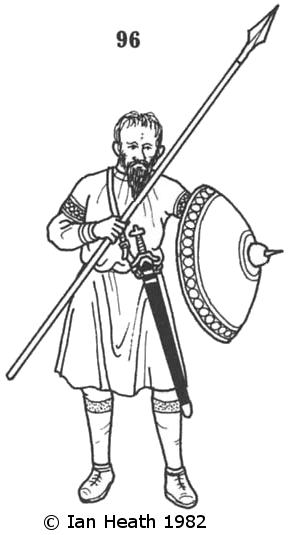
Create an Amazon Wedding Registry

SICILIAN GREEK INFANTRYMAN, 11th CENTURY
An extract from Armies of Feudal Europe 1066-1300by Ian Heath


96. SICILIAN GREEK INFANTRYMAN, 11th CENTURY
Despite its Conquest by the Arabs in the 9th-10th centuries and by the Normans in the mid-11th century, Sicily retained a large Greek-speaking element throughout much of this era, best known by the term 'Griffons' applied to them in the late-12th century by Richard I's crusaders. They performed military service alongside the Italo-Norman colonists, whom they at first considerably outnumbered. There were also many Greeks still to be found in Apulia, and to a lesser extent southern Calabria, on the Italian mainland, particularly round Otranto.
This figure, dating to the Norman era (Palermo Cathedral, c.1084), is still essentially Byzantine in appearance though the sleeve embroidery and sword (probably an Andalusian import) betray strong Moslem influence. Sicily's most famous Greek soldiers in this period were her admirals, men such as John Christodoulos, George of Antioch and Margaritus of Brindisi.
[Based on The Sleeping Guards, on an Ivory Altar Panel, Sicilian or south Italian, 1100-1150 AD. Museo Diocesano, Salerno.]